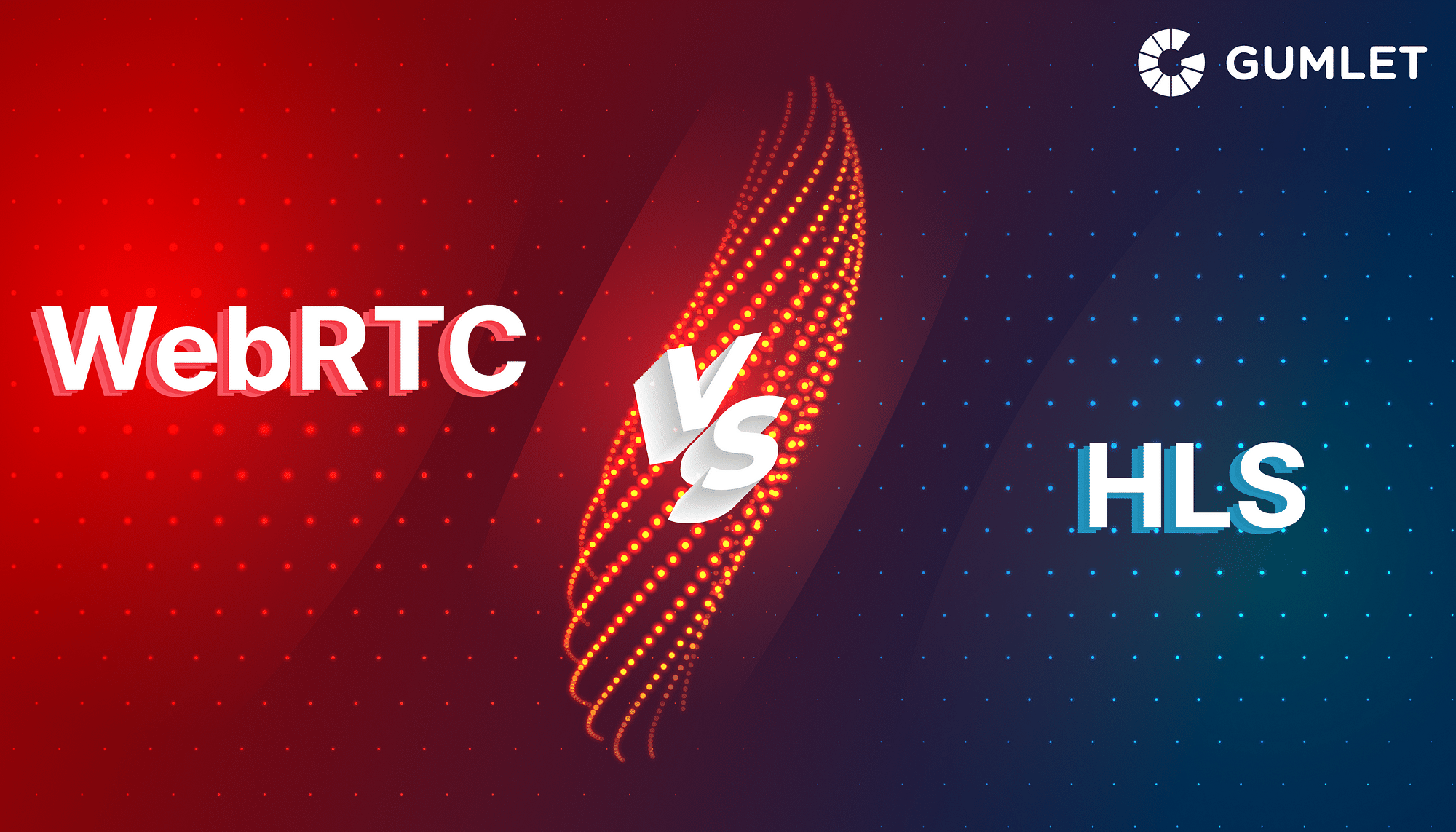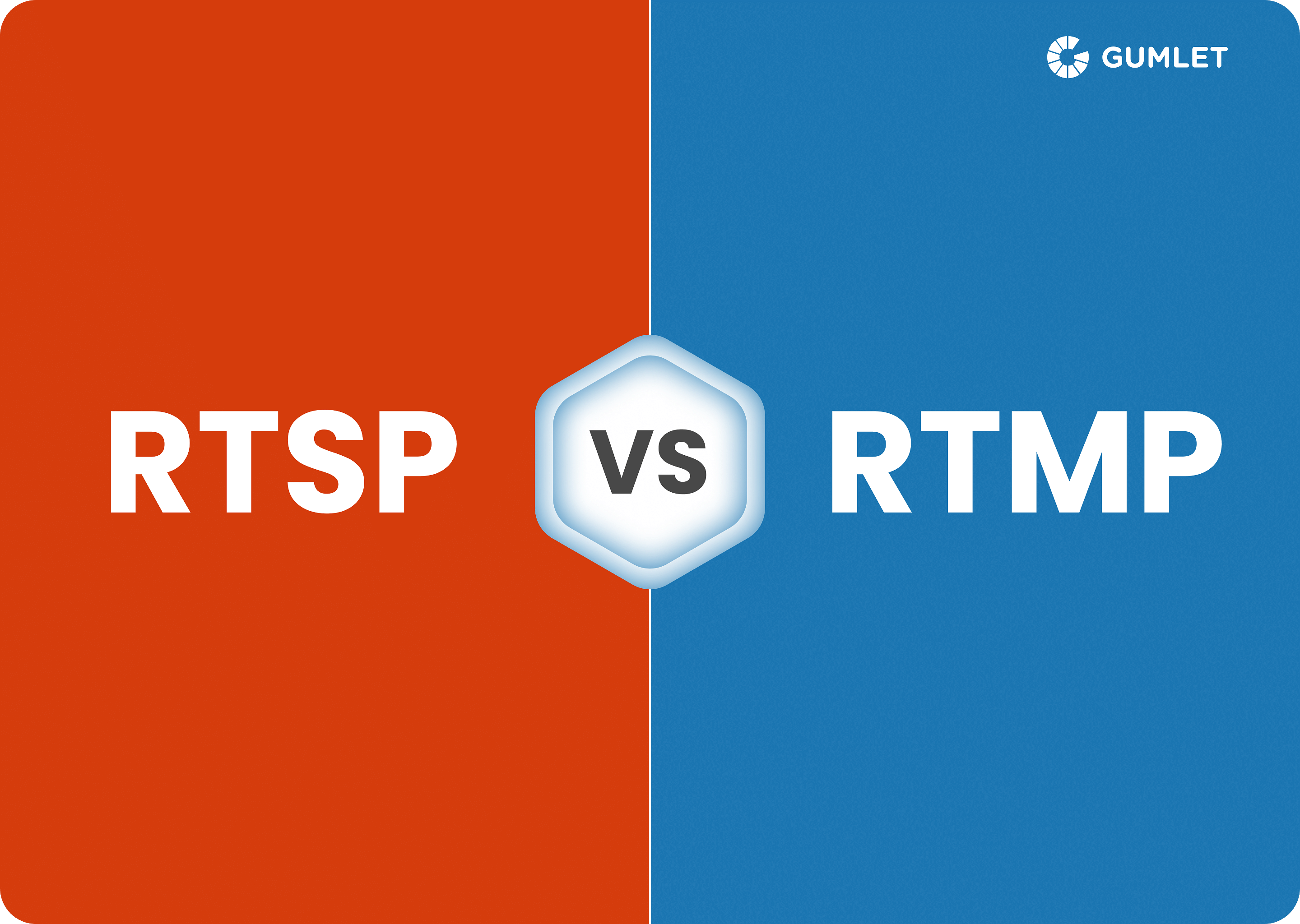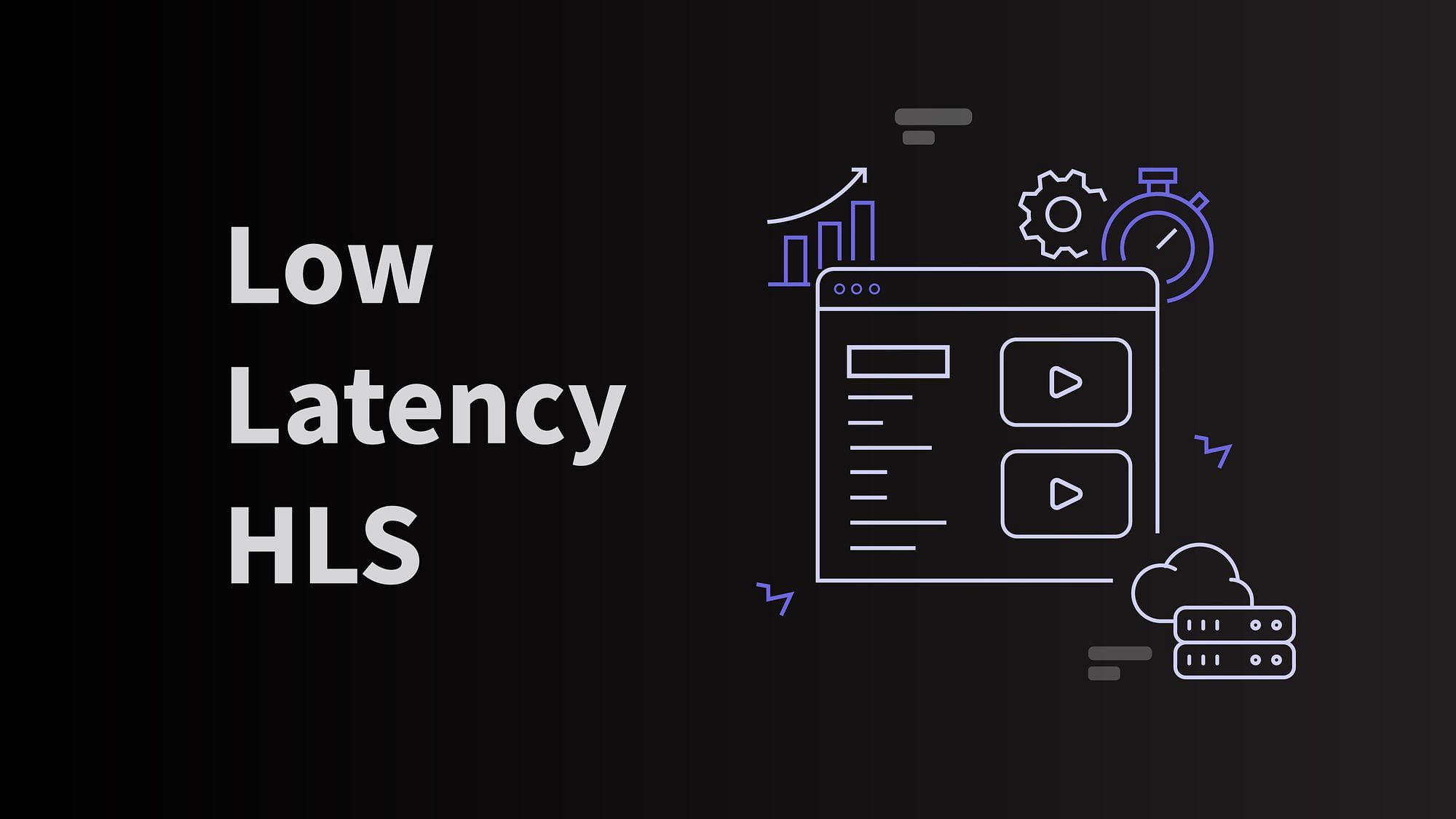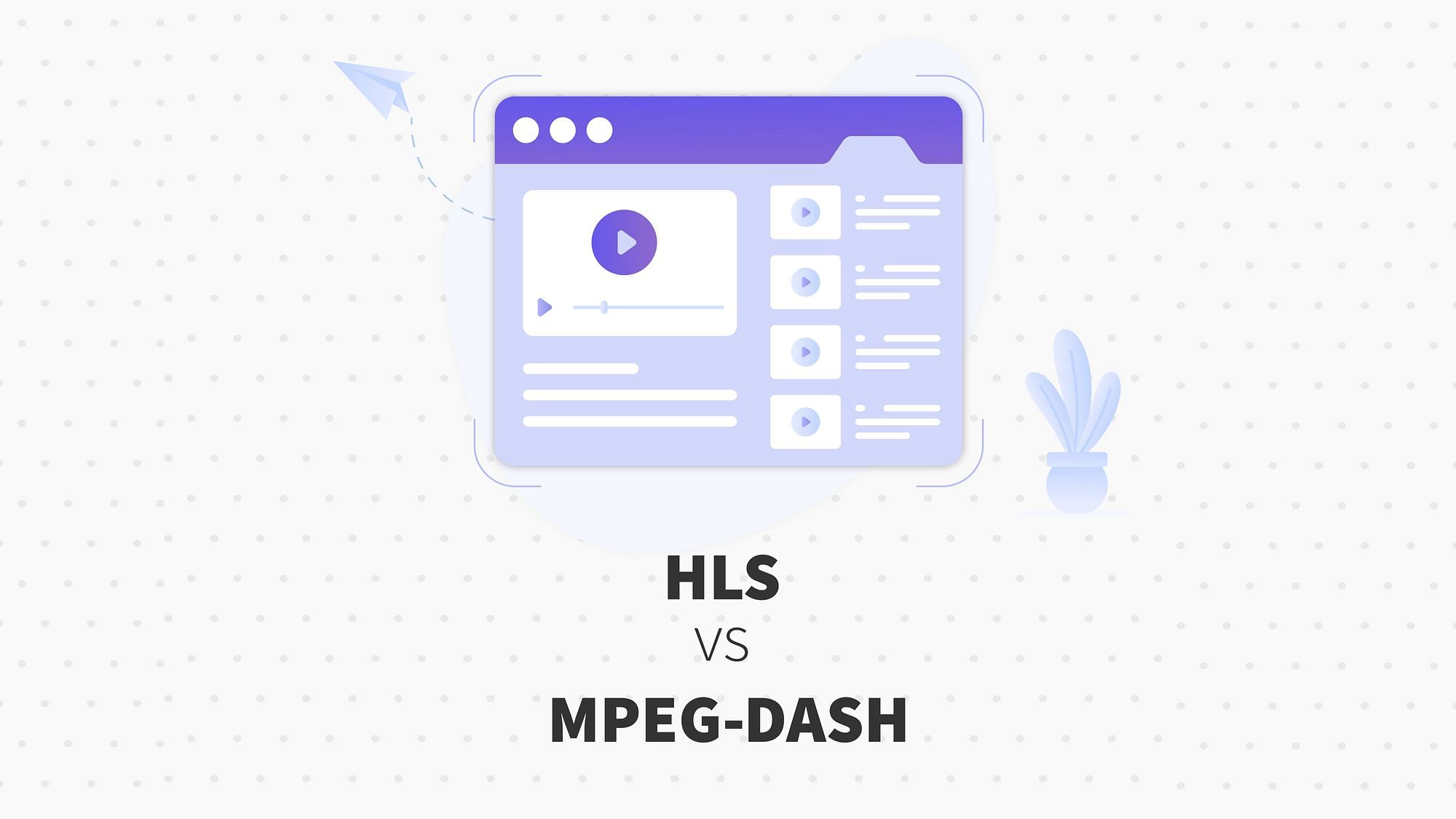In today's digital age, streaming protocols have become essential to consuming and sharing media. From live streams to video on demand, streaming protocols have enabled us to access content anywhere, anytime. But with so many options available, knowing which is best for your needs can take time and effort. In this article, we'll look at two of the most popular streaming protocols: WebRTC and HLS, compare them and help you make an informed decision.
What is WebRTC?
WebRTC is a free and open-source protocol developed by the W3C. It enables real-time communication, such as voice and video calls, online conferencing, and chat. WebRTC has become prominent recently due to its ability to deliver low-latency, high-quality video and audio streams.

Applications of WebRTC
Here are some of the most frequently employed use cases of WebRTC:
- Voice and Video Calls: One of the most popular use cases for WebRTC is the voice and video calls. It allows for real-time, low-latency communication between two or more people. Businesses widely use this feature for internal communication, collaboration, and consumer-facing apps for social networking and online dating.
- Online Conferencing: Another popular use case for WebRTC is online conferencing. It enables multiple users to join a virtual meeting room and interact with each other through video and audio, as well as share screens and documents. Businesses widely use this feature for remote meetings and presentations, as well as by educational institutions for online classes and lectures.
- Chat: WebRTC also enables real-time text-based communication through chat. This feature can be integrated into various apps and platforms, such as social networking, online gaming, and customer support. It allows for instant communication and can be used to enhance the user experience in various contexts.
| Advantages | Disadvantages |
|---|---|
| Low latency | Limited browser support |
| High-quality video and audio streams | Requires a direct connection between peers |
| Free and open-source | Limited device support |
What is HLS?
HLS (HTTP Live Streaming) is an adaptive bitrate streaming protocol developed by Apple. It is widely used for live streaming on mobile devices and desktop browsers. HLS is designed to work with the HTTP protocol and can be easily integrated into existing HTTP-based infrastructure.
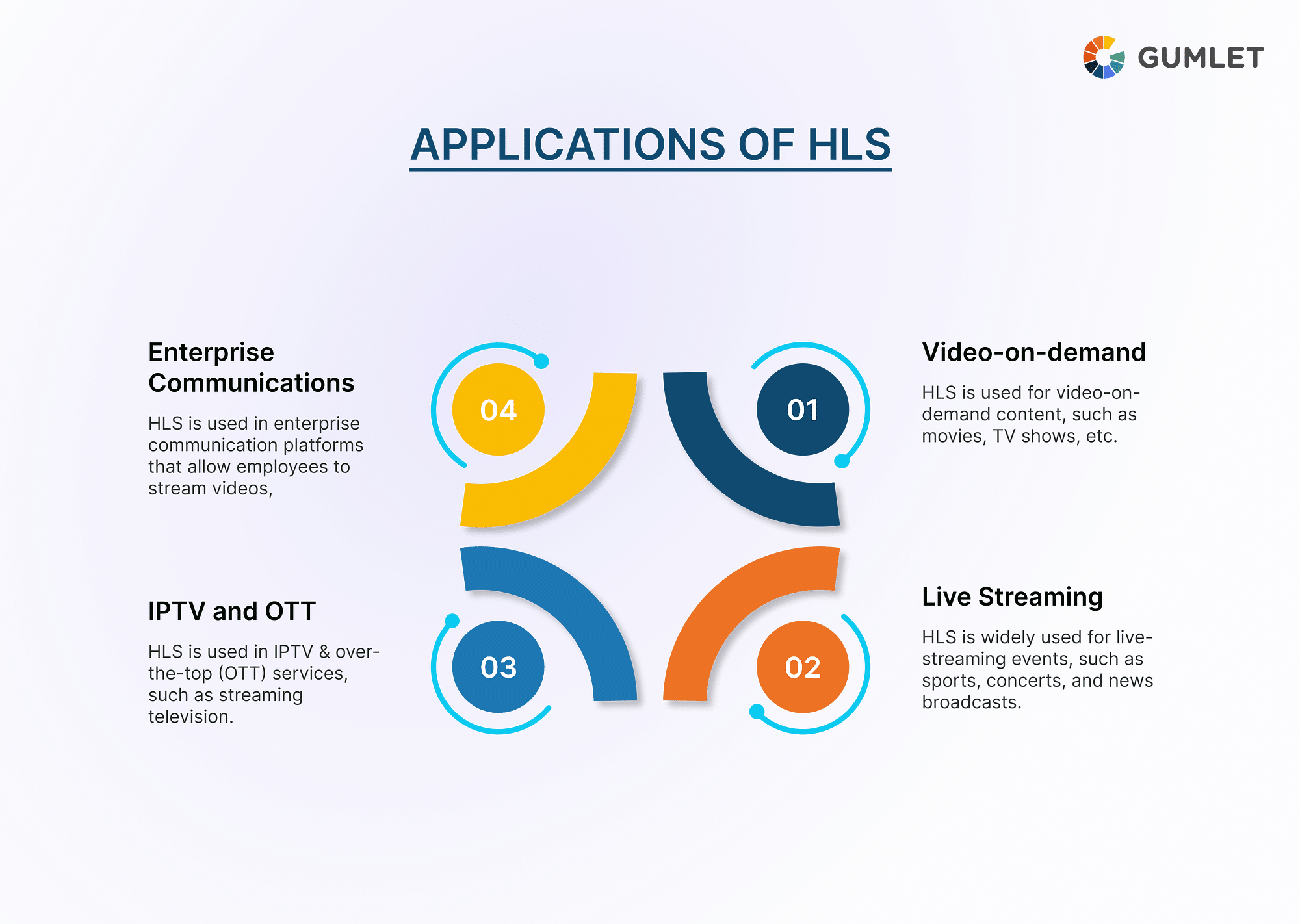
Applications of HLS
Here are some of the more common ways HLS is used in today's day and age:
- Live Streaming: HLS is widely used for live-streaming events, such as sports, concerts, and news broadcasts. The protocol is designed to handle high traffic and provide a smooth streaming experience for viewers. The adaptive bitrate feature allows the stream to adjust to the viewer's internet connection, providing a better viewing experience.
- Video-on-demand (VOD): HLS is also commonly used for video-on-demand (VOD) content, such as movies, TV shows, and video tutorials. The protocol allows for easy integration with content management systems and a smooth streaming experience for the viewer with adaptive bitrate.
- IPTV and OTT: HLS is also used in IPTV and over-the-top (OTT) services, such as streaming television and video services. The protocol's ability to handle high traffic and provide a smooth streaming experience makes it a popular choice for these applications.
- Mobile Streaming: HLS is also popular for mobile streaming as it is supported on both iOS and Android platforms.
- Enterprise Communications: HLS is used in enterprise communication platforms that allow employees to stream videos, share screens, and make audio/video calls since it provides a smooth streaming experience and is compatible with most devices.
| Advantages | Disadvantages |
|---|---|
| Widely supported by devices and browsers | Higher latency compared to WebRTC |
| Adaptive streaming | Limited real-time capabilities |
| Scalable and reliable | Higher costs for server infrastructure |
WebRTC vs HLS: A Detailed Comparision
| Feature | WebRTC | HLS |
|---|---|---|
| Browser Support | Chrome, Firefox, Safari, Edge (with a plugin) | Safari, Chrome, Edge, Firefox (with a plugin) |
| Device Support | Windows, MacOS, Linux, iOS, Android | iOS, Android, MacOS, Windows |
| Codec Support | VP8, VP9, H.264, H.265 | H.264, H.265 |
| Latency | Low | High |
| Security | High | Medium |
| Video Quality | High | High |
| Delivery Method | Peer-to-peer | Server-based |
| Scalability | High | High |
| Compatibility | Limited | Wide |
When deciding which protocol to use, it is important to consider factors such as latency, security, video quality, delivery method, scalability, and compatibility.
Latency
When it comes to latency, WebRTC has a clear advantage over HLS. WebRTC uses real-time communication, meaning the video is instantly delivered to the viewer. On the other hand, HLS uses a buffering mechanism, which delays video delivery. Depending on the network conditions, this delay can be anywhere from a few seconds to a few minutes. These elements make WebRTC more suitable for use cases that require low latency, such as live video chats and online gaming.
Security
Both WebRTC and HLS use encryption to secure video streams. However, the level of security provided by each protocol is different. WebRTC uses the Secure Real-time Transport Protocol (SRTP) to encrypt the video stream, which is considered one of the most secure encryption methods. On the other hand, HLS uses the HTTP Secure (HTTPS) protocol to encrypt the video stream. While HTTPS is considered secure, SRTP is less secure. Because of these reasons, WebRTC is more suitable for use cases that require high levels of security, such as financial transactions and government communication.
Video Quality
Both WebRTC and HLS are capable of delivering high-quality video. However, the video quality delivered by each protocol can vary depending on the network conditions. WebRTC uses adaptive bitrate streaming, which adjusts the video quality in real-time based on the viewer's network conditions. This means that the video quality will be high even on low-bandwidth networks. On the other hand, HLS uses a pre-segmented video delivery mechanism, which can lead to buffering and stuttering on low-bandwidth networks. As a result, WebRTC is more suitable for use cases that require high-quality video on low-bandwidth networks.
Delivery Method
WebRTC and HLS use different delivery methods to stream video. WebRTC uses a peer-to-peer (P2P) delivery method, which means that the video is delivered directly from one viewer to another. This reduces the server load and increases the video stream's scalability. On the other hand, HLS uses a client-server delivery method, which means that the video is delivered from the server to the viewer. This can lead to scalability issues, especially during peak traffic times. As a result, WebRTC is more suitable for use cases that require high scalabilities, such as live events and online gaming.
Scalability
WebRTC and HLS have different scalability characteristics. WebRTC uses a P2P delivery method, which reduces the server's load and increases the video stream's scalability. On the other hand, HLS uses a client-server delivery method, which can lead to scalability issues, especially during peak traffic times. As a result, WebRTC is more suitable for use cases that require high scalabilities, such as live events and online gaming.
Compatibility
WebRTC and HLS have different compatibility characteristics. WebRTC is compatible with most modern browsers, including Chrome, Firefox, and Safari. However, it is not compatible with Internet Explorer and Edge. On the other hand, HLS is compatible with most modern browsers, including Chrome, Firefox, Safari, Internet Explorer, and Edge. Because of this, HLS is more suitable for use cases that require compatibility with a wide range of browsers and devices.
WebRTC vs HLS: Which is Better?
WebRTC is a great option for low-latency, real-time streaming applications. It is perfect for use cases such as voice and video calls, online conferencing, and chat. On the other hand, HLS is an excellent option for streaming live video to a large audience. It is particularly well-suited for use cases such as streaming live sports, concerts, and other events requiring high scalability. HLS's ability to adapt to different network conditions makes it a popular choice for streaming content to viewers on various devices and networks.
Additionally, HLS has better support for protecting the content's copyright, making it a preferred choice for streaming premium content. When it comes to compatibility, HLS has a slight edge over WebRTC. HLS is widely supported, making it a more versatile option for streaming content to a wider audience. However, this comes at the cost of slightly higher latency.
If your main focus is real-time, low-latency streaming, WebRTC might be your better option. Otherwise, if your main focus is on scalability and compatibility, then HLS might be the better choice.
Conclusion
In conclusion, both WebRTC and HLS have their own unique features and use cases that make them suitable for different types of streaming. WebRTC is best suited for low latency, real-time communication such as voice and video calls, online conferencing and chat. On the other hand, HLS is best suited for the high-quality streaming of pre-recorded videos on a wide range of devices.
FAQs
1. Does WebRTC use TCP or UDP?
WebRTC uses both TCP and UDP depending on the type of data being transmitted. It uses TCP for controlling messages and UDP for media streaming.
2. Does YouTube use HLS?
Yes, YouTube uses HLS (HTTP Live Streaming) as one of its streaming protocols to deliver videos to viewers.
3. Is WebRTC only for browsers?
WebRTC is primarily a browser-based technology, but it can also be used in native apps through WebRTC libraries.
4. Does Netflix use WebRTC?
No, Netflix does not use WebRTC for streaming. They use their own proprietary technology called Adaptive Streaming over HTTP (ASoH) that is based on HTTP Live Streaming (HLS).

